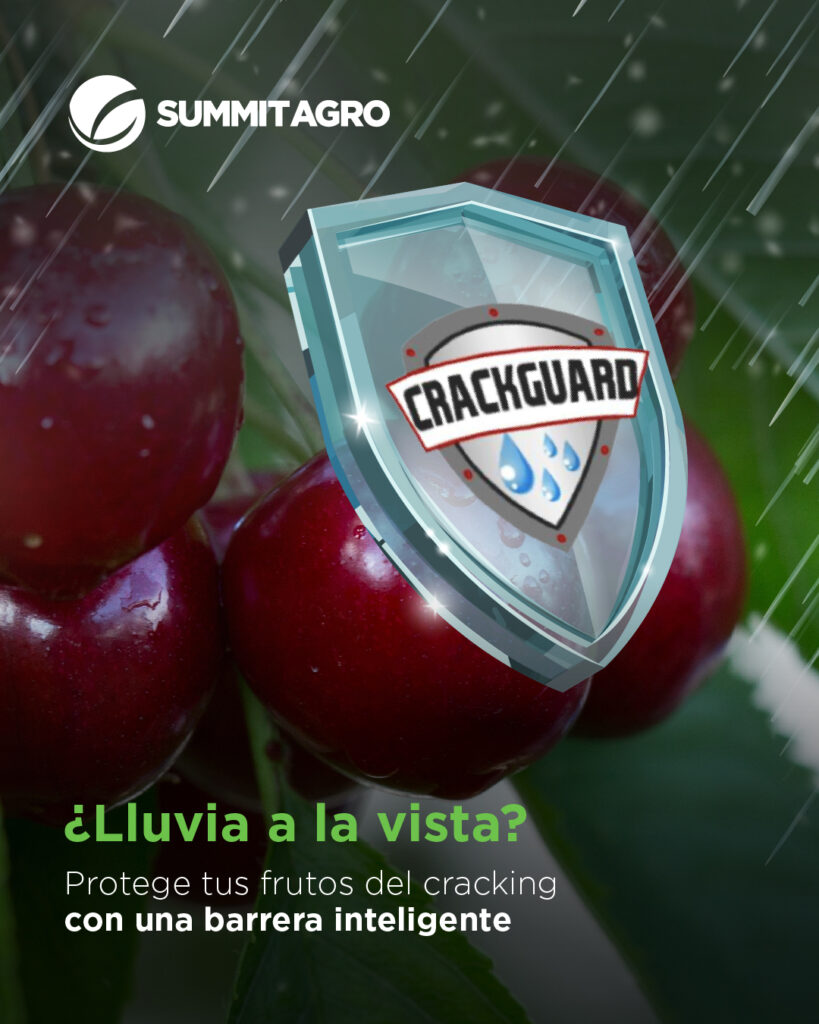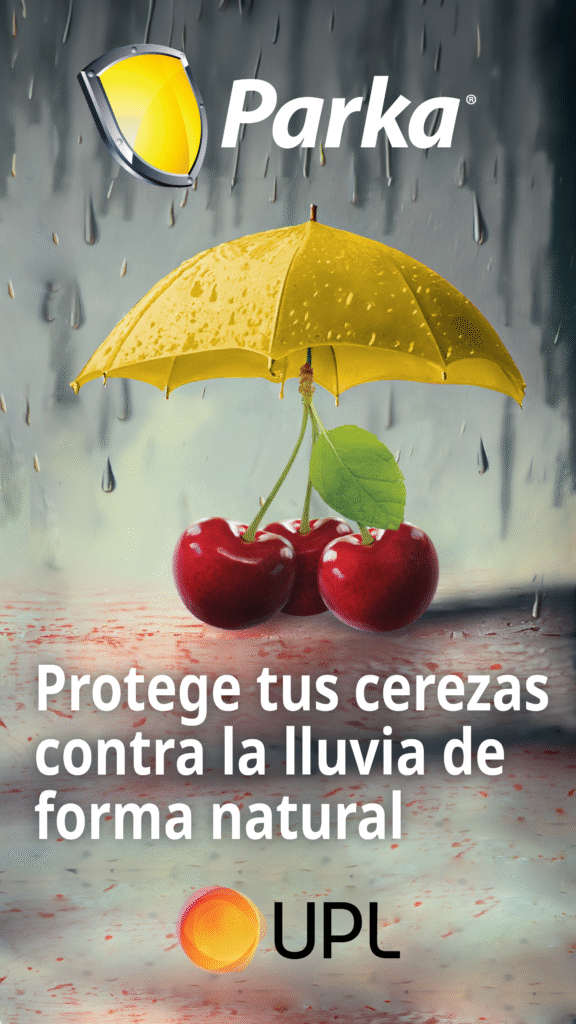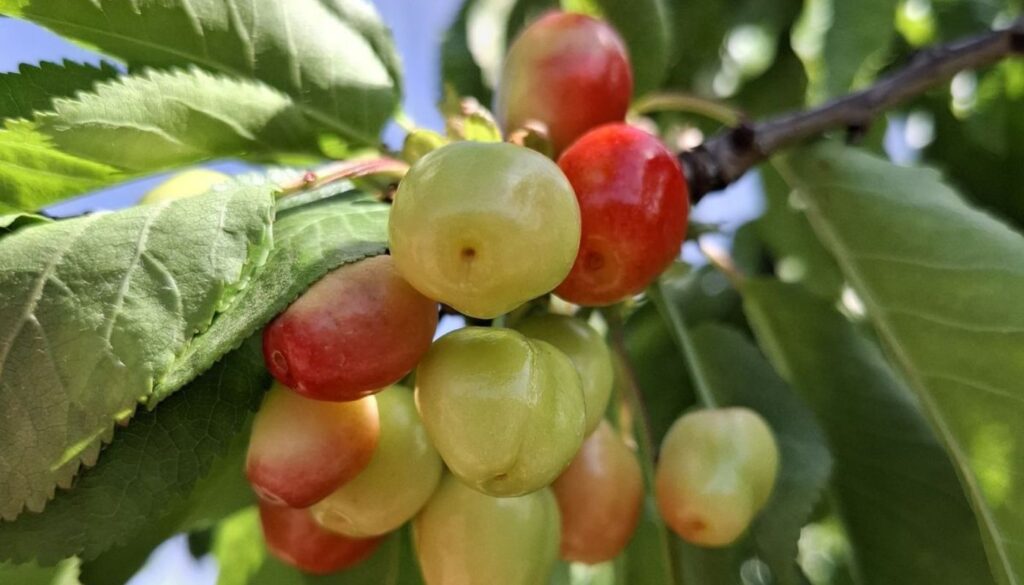The recent weekend once again put cherry producers to the test, so much so that many have indicated that the 2023-2024 season is the most complex one they have ever experienced; and how could it not be?, if winter and spring have presented constant challenges for the production of this delicate fruit species.
The culprit? “El Niño,” a phenomenon that will remain in the southern hemisphere until the fall of 2024. According to the most recent forecasts, there is a 50% probability of the development of a “strong El Niño,” persisting until January-March; and a 35% probability that said event will become “historically very strong” for the November-January season.
Unfortunately, the figures are not encouraging, nor is what happens every time there is a late spring rainfall event; this has forced cherry producers to be more attentive than ever to the weather forecasts, which, as if that were not enough, are usually above expectations. This past weekend, between 8-9 mm were expected for Friday and 9-10 mm for Saturday, with a concentration mainly in the foothills and mountain ranges. However, in the Rauco area, for example, it rained more than 25 mm, while in Romeral, more than 35 mm during the weekend.
A weekend at full speed

Rainfall during this time of year can be detrimental to cherry production; rain from straw color/beginning of veraison can cause cracking, as the water on the fruit, which already has high sugar and other solute content, enters its interior due to osmotic pressure differential, causing cracking.
There are various management measures that can be carried out to minimize the incidence of cracking, which were explained in detail in the article «The cursed spring: How to minimize the incidence of cracks?, which producers put into practice over the recent weekend.
At the “El Milagro” orchard of Agrícola El Sembrador, located in the commune of Rauco, Maule region, they did not stop throughout the day on Friday, Saturday and Sunday. Using turbo-foggers, they applied chloride to the 80 hectares of cherries before and during the rains.
«We have been applying muriate chloride since 03:00 in the morning. It has been a long, difficult morning, but we have put in effort and determination, doing everything possible to save this. We are not going to stop applying chloride until this stops and we are unloading water from the trees every two hours with helicopters and it is said that at 6 in the afternoon it will stop a little and then we will leave the orchard completely dry with a helicopter.», commented Raúl Salas, a cherry producer.
This work was repeated day and night, and although there was more rainfall than expected, the numbers in the “El Milagro” garden are cheerful.
«After three hours, which we discussed with the Avium technical team, we were supposed to see cracks and we checked and so far we are undefeated, there are no cracks», said Raul Salas.

Chloride applications are highly complex, as they must be constant and successive before and during rain at concentrations of 0-5%-1%, which has been favorable when proper operation has been maintained. However, this operation involves a high demand for the use of machinery and labor, as passes must be made at maximum intervals of two hours over the same place while it is raining.

The situation of carrying out various management measures to avoid the incidence of cracking due to rain was repeated in different parts of the regions affected by the frontal system. In the commune of Romeral, also in Maule, Andrés Cabalín, an agricultural engineer, consultant and cherry producer, spoke about what happened during the last rain in his orchard.
«This weekend, we had 37 mm here between Friday when 31.5 mm fell and the differential fell on Saturday", said Andrés Cabalín.
On this occasion, they were able to carry out all the procedures to prevent cracking, unlike the previous frontal system, where because they had not yet applied Gibberellic Acid, they could not use waxes to prevent cracking.
«This year, 20 percent of the fruit fell spontaneously, and then, with the rain, 30 percent of the fruit broke. During the first rain, more green fruit and the first ones that were just turning brown broke, but they were large fruits. In that minute, there was a loss of around 30%, especially the Royal Dawn.», explained the producer from the Romeral area.

The orchard is made up of 40 hectares of cherry trees, a significant part of which are under cover and some are even in a greenhouse; the fruit from this last sector will begin to be harvested next Thursday.
Fortunately, the damage in this last rain was minimal in the orchard located in the Los Carros sector, however there is still concern about new frontal systems; in fact there is a 90% probability of rain this Friday in the central zone; in Maule 5.6 mm are expected, while in O'Higgins there will be light drizzle between Wednesday and Friday.
Unions concerned about late rains
Last week, in response to the warning of new rainfall, both Fedefruta and the SNA referred to the complex scenario that producers, especially cherry producers, would have to face.
«…This is very damaging for cherry production, especially for early cherries; once the cherries are in veraison, they are very sensitive to cracking, therefore the call that we want to make from the National Society of Agriculture is to apply calcium before the rains, during and after the rains. The recommendation is also to start drying as quickly as possible, with the means that we have, whether with a sprayer, starting the frost control towers, drying with wind and after the rain, we will have to apply fungicide because the cherry is also very sensitive to rotting., recommended the president of the National Agricultural Society and cherry producer, Antonio Walker.
For his part, Jorge Valenzuela, President of Fedefruta, also referred to the complex situation that cherry growers are experiencing: "The amount of water that has fallen on the eve of the cherry harvest is something I have never seen at this time of year." (…) “With the rain, the wind, the hail and the thunderstorms with the live fruit on the trees, the outlook for fruit growers is very complicated,” concluded the leader.
The damage is still uncertain; various associations are carrying out surveys to quantify the damage to orchards caused by cracking caused by rain, a situation that is occurring just before the departure of the first ship with cherries for China this season.










